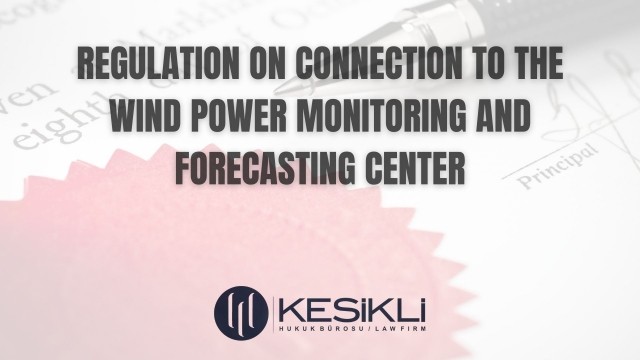Introduction
Amendments to the Regulation on Unlicensed Electricity Generation in the Electricity Market were finally published in the Official Gazette (29662) on March 23 2016. The Energy Market Authority (EMRA) had published a draft version of the regulation on November 26 2015, which contained three significant amendments shaped by the needs of market players. It had then opened the amending regulation to public consultation. After gathering public opinion on the proposed changes, EMRA finalised the amending regulation, which has introduced important amendments and restrictions to the Regulation on Unlicensed Electricity Generation in the Electricity Market.
Separate grid capacities for wind and solar energy
Under the amending regulation, distribution licence holders and organised industrial zone distribution licence holders must now notify the Turkish Electricity Transmission Corporation (TEİAŞ) of available connection capacity for wind and solar energy. TEİAŞ will then provide its opinion on the capacity to be made available for connection applications within one month.
Allocating separate available connection capacities for wind and solar energy as per TEIAS’s opinion is likely to promote the effective use of renewable energy resources according to the specific characteristics of the sites on which the plants will be built.
Publication of newly available capacities
If additional capacity is made available for any reason in a transformer station that had reached maximum capacity or capacity becomes available in a newly operational transformer station, the available capacity will be announced on TEİAŞ’s website on the first day of April, August and December of each year after the system operator and TEİAŞ conclude a system usage agreement. Applications for new capacities can be made only from three months after the date of announcement.
The amending regulation has introduced limitations on the distance to the grid to which generation plants can be connected. For generation plants with installed power of up to 0.499 megawatts (MW), the air distance between the plant and the grid cannot be greater than five kilometres (km) and the distance to the grid on which the design of the generation plant was based cannot be greater than six km. For generation plants with installed power of between 0.5 or 1 MW, those limits are respectively 10 km and 12 km.
Capacity limitations for wind and solar energy
The amending regulation provides that – except for rooftop applications – a maximum of 1 MW capacity within a transformer station can be allocated to an applicant (real person or legal entity), including any legal entity owned (even partially) or controlled by an applicant, regardless of the number of consumption facilities for which such applications are made.
The applicants’ declarations are assumed to be correct during the evaluation stage. However, if a declaration is proven to be incorrect, incomplete or misleading, the connection agreement with the related entity or individual will be terminated. The amending regulation introduces an exception regarding cooperative entities that make applications for capacities between 1 to 5 MW under certain conditions, provided that the installed capacity of each generation plant cannot exceed 1 MW.
Further, with the recent amendments, the installed capacity of a generation plant cannot be more than 30 times the contracted consumption capacity of the consumption facility associated with the generation plant, as per the Regulation on Unlicensed Electricity Generation in the Electricity Market.
Following a technical assessment, the Renewable Energy Head Office (YEGM) publishes the technical assessment reports of successful applications on its website. Applications that relate to wind power are now required to apply to the Scientific and Technological Research Council of Turkey (TÜBİTAK) for technical interaction permission. A certificate indicating that this application has been made on time must be submitted to the YEGM within 30 days of the publication date of a successful application. If the documents are not submitted to the YEGM within the prescribed time period, it will notify the relevant system operator that the application has not been made and the system operator will refuse the application. If an application is made on time, the YEGM will notify the relevant system operator accordingly. Pending finalisation, the applied capacity will be reserved.
The amending regulation provides that unlicensed generation applications made for sites for which licence or pre-licence applications are also made will be rejected. Pre-licence applications made for wind and solar energy sourced facilities will be evaluated as per the applicable legislation and concluded if the technical assessment report is positive. If the YEGM concludes that a licence application and an unlicensed generation application are detrimental to each other, the unlicensed generation application – other than one granted with an invitation letter – will be rejected. If an applicant for unlicensed generation has an invitation letter and the licence or pre-licence application cannot be revised, the licence and pre-licence applications will be rejected. The same rule also applies to licence and pre-licence applications concerning other energy resources; however, if an unlicensed generation applicant becomes entitled to an invitation letter and a licence or a pre-licence application is made for the same site on the same day, the application for unlicensed generation will be rejected.
Immunity for applicants appropriate for prescribed projects
Article 3 of the amending regulation introduces a different regulatory regime for the Ministry of Energy and any entities that it chooses regarding applications for unlicensed generation and the use of surplus energy from generation plants directly connected to their consumption facilities. Article 4 of the amending regulation provides that the system operator will approve applications concerning generation facilities that fall within the scope of the new regime.
Merger, demerger and share transfer restrictions
An entity that owns an unlicensed electricity generation plant may merge with entities that are wholly owned by such an entity on condition that the wholly owned entities merge into the entity which owns the generation plant. An entity owning an unlicensed electricity generation plant may also merge into entities that are wholly owned by it to the extent that the wholly owned entity owns an unlicensed electricity generation plant. In any event, the merger may take place only after provisional acceptance has been made. The system operator must be notified one month before the merger transaction. The merger transaction and other transactions required by the applicable legislation should be conducted simultaneously.
If the entity owning an unlicensed generation plant is to be demerged, this transaction may be carried out only if provisional acceptance for all of the entity’s unlicensed generation plants has been provided and to the extent that the entity fully owns the shares of the new corporation which will emerge from the demerger.
Share transfers are prohibited for companies that have applied for unlicensed wind or solar energy generation, until the provisional acceptance for such generation plants has been granted. Following provisional acceptance, the relevant system operator must be notified one month before the share transfer transaction. In case of a share transfer in breach of this restriction, an invitation letter to the connection agreement will be terminated.
Companies planning to invest in unlicensed electricity plants or in the process of signing a connection agreement should familiarise themselves with the newly incorporated rules, as violations may result in the termination of their connection agreements or refusal of their applications.
@Kesikli Law Firm
Let's Get Connected!



